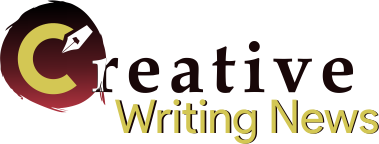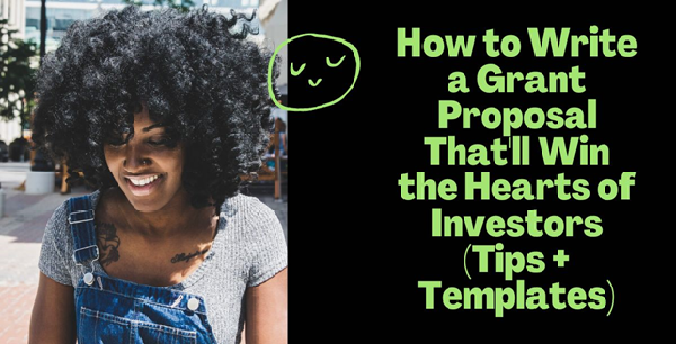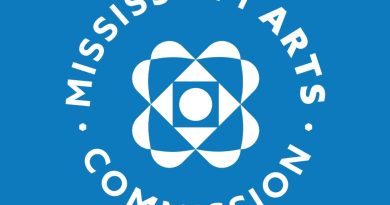How to Write a Grant Proposal That’ll Win the Hearts of Investors (Tips + Examples + Templates)
Figuring out how to write a grant proposal can be a real headache, for obvious reasons.
Grant proposals are the project’s defined deliverables for the financial expenses and how these finances would source from various areas. Therefore, the grant proposal is expected to be convincing enough to guarantee the success of the project. Otherwise, the funding will not be granted. So how can you write an effective grant proposal?
To eloquently write a winning grant proposal, you must ensure that it is well managed and packed with all the necessary information to cover a project’s needs. A grant proposal should not only focus on providing the generated profit but also explain how the project would bring a positive change.
In this article, we will guide you on how to write a grant proposal that will win the hearts of investors. We will share some tips and templates for writing a grant proposal. Moreover, we present the factors that should be ignored in writing a grant proposal.
Essential Elements of a Grant Proposal

Before you write your grant proposal, make a checklist of elements that must be included. The elements discussed below are essential tips for successfully writing a grant proposal to win an investment opportunity.
-
Confident Tone
A grant proposal should show that you are confident in presenting your idea. You should use the terms like ‘might’ or ‘perhaps’ as it gives an impression that you’re not sure about what you’re trying to propose. Keep a confident tone supported with facts so the investor becomes obliged to respond to you.
-
Goals and Objectives
To ask for the grant, you may have to present the goals and objectives you will achieve with that financial aid. Present the complete blueprint for what you will achieve and how long it will take to achieve these goals.
-
Budget
The budget element in the grant proposal is not only based on a single figure. But you have to present the summary of the complete calculation, stating how you will spend the financial aid. It is important to mention all the expenses and cash flows to present a pre-decided budget. Do leave variation for unprecedented expenses.
-
Conversational
Keeping a conversational writing style in a grant proposal doesn’t mean that you should start using slang language. You still have to keep it formal yet friendly. Grant proposal speaks for you, so be a conversation maker that compels the investor in your project.
-
Avoid Fluff and Duplication
The readability and quality can win the hearts of investors. Ensure you are not repeating the same terms excessively, as it may affect readability.
Moreover, you must ensure that the content of your discussion in the grant proposal is unique, like a cover letter, problem statement, etc. Therefore, it’s vital to check plagiarism of your proposal before submitting its final version to the investors.
Steps to Write a Winning Grant Proposal
Now that we have learned about the crucial elements of grant proposal writing, let’s talk about how you can progress to writing a grant proposal following a step-by-step approach to keep things in order.
-
Write an Effective Cover Letter

The cover letter is the first impression from your side on the investors. It presents you with the perfect opportunity to get the investor’s attention. Unlike the rest of the grant proposal, the cover letter is less formal and tends to hit the readers directly.
The purpose of writing effective content is to compel the reader to read the proposal. The investors may have received hundreds of proposals, and they may not spend hours reading one. The cover letter of your grant proposal should state how your reason stands out from the others.
Make Sure to:
- Keep it concise and to the point as much as you can.
- Mention the primary information like how much grant you need and what for.
- Avoid redundancy to keep the letter straightforward and readable.
- Make your goals and achievements relevant to state how they would have influence.
Example:
Palm Scholars High School is pleased to present this proposal to you for review. We look forward to partnering with you to provide a reading intervention program for students with learning disabilities called Reading for Success! Palm Scholars High School has more than 50 at-risk students whose academic achievement is more than two years behind their current grade level.
The purpose of the “Reading for Success” program! This program is designed to help all students with learning disabilities learn to read at grade level and improve their reading speed, comprehension, and attention.
Last year we hosted a Learn to Succeed! With a small group of students with poor reading skills, most of them improved their reading skills significantly, gaining a grade or two in reading. Read on for success! The program provides students with a supportive learning system and training for classroom teachers and learning professionals.
-
Present an Executive Summary
The executive summary is the next important element that leaves the first impression on your investors. Every winning proposal needs to be started with an executive summary that states all the contents of your grant proposal.
A proposal summary gives you a brief overview of the entire grant proposal, which elaborates on what you will discuss. The executive summary should introduce your business, marketing segment, proposals, and project goals. It should present specific details to get the investors to understand your grant proposal’s point.
Make Sure to:
- Adjust the summary to at most 2 pages to give a brief overview of your proposal.
- Ensure to include the resources by mentioning the funds you are requesting.
- Do not go too deep with the details.
Example
Palm Scholars High School in Miami, Florida is seeking grants to support learning for success! A program that helps all at-risk students improve their reading skills and read at grade level using peer-to-peer books and materials.
Our goal here is to at least double our students’ reading speed and improve their reading skills by a grade or two by the end of the year. Read on for success! This program is based on the latest research in effective reading education. $16,504 is requested for software and hardware purchases for staff training and learning spaces in the school.
-
Introduce Your Organization
Once you have written the cover letter and executive, you have set the platform, to begin with, your grant proposal’s details. You can begin introducing your organization by sharing as much relevant information as possible. You can discuss the organization’s history, infrastructure, mission, and experience or present a success story.
Since the introduction is about the first impression of your organization, it is vital to share the biography of your key staff and their roles in the organization. You can also highlight your expertise to discuss how you brought the company into a successful position.
Client recommendations and feedback from customers can also be helpful in this case. Don’t forget to mention any valid certifications regarding quality. All this information is necessary to support the fact that your company has the potential to bring an idea into reality with the help of some financial support.
Make Sure to:
- Be objective but avoid exaggerating things about yourself.
- Provide a supporting backstory with facts.
- Connect the grant maker as naturally as possible with your mission.
-
Present the Needs Statement
The needs statement is one of the most crucial parts of the grant proposal. It is also known as the problem statement because you’re supposed to discuss the challenges faced in a community. In the needs statement, you present how your proposed idea would help to make a difference in society. In other words, how you would be the solution to a problem.
To present the needs statement, you must perform extensive research on the problem that your organization would help resolve. You may also have to discuss how others tried to resolve the discussed problem and why they potentially failed. So, the quantitative data in the grant proposal may rely heavily on it.
Make Sure to:
- Use comparable and quantitative data by showing the results and satisfactory outcomes.
- Press the urgency to begin the project before it’s too late.
- Focus on the key problem.
Example
Palm Scholars High School has 998 students, 69 of whom have been identified as at-risk for a variety of reasons, including attention deficit disorder (ADHD) and dyslexia or other economic and language-related learning disabilities. Problem. Palm Scholars High School is eligible for Title 1 funding, and research shows that these students are more likely to drop out if they don’t have the opportunity to improve their education.
-
Discuss Organization Goals

The next thing to state in the grant proposal is the organizational goals. Many proposals get rejected because they fail to present the goals and objectives they expect to achieve in the project.
You can write the details about the expected outcome and how the success scale will be measured. The goals and objectives section are the key area where you can mention the changes you can bring to the environment. And most importantly, these changes should bring a positive change.
Even though the goals and objectives sound familiar, they should not be understood as the same thing. Goals can be considered broad statements, and objectives are more specific targets with expected outcomes in a given time frame. This step should not be forgotten, nor should it be mishandled in the grant proposal.
Make Sure to:
- Objectives should be mentioned as outcomes like you want to achieve them.
- Follow the SMART rule (Specific, Measurable, Attainable, Realistic, and Time-bound).
- Relate the goals and objectives with the audience.
Example
The Palm Read to Innovate project allows at-risk students to improve their reading skills using five computers equipped with scanners and learning support software. With this innovative learning system, students have access to all learning materials, including textbooks, which provide access to the general curriculum.
Students improve their reading speed and comprehension to become more proficient in the classroom. Included in the research for success! This project is a day of training for education professionals and classroom teachers in the features and use of writing and editing software.
-
State Flow of Project Strategy
Now that you have stated the goals and objectives, it’s time to elaborate on how you will achieve them. For starters, you can mention the skill sets and team that you have hired to achieve these goals. You can also discuss the additional facilities like transport and support services to make the workflow as smooth as possible.
It’s vital to mention project management methodologies with a disciplined schedule to keep a good focus on achieving the task. For further clarity, you can present examples of how your proposed methods successfully helped achieve some previous projects.
Make Sure to:
- Connect the objectives with the strategy. Your methods should be well outlined with a needs statement as well.
- Make your strategy cost-effective, so investors realize that your methods are rational.
-
Evaluation Process
Evaluation is not only related to quality assurance but is mainly related to the progress tracking of your project. It includes the time frame required for evaluation and the person responsible for handling the evaluation phase of the project.
The evaluation process is another key section that has the investor’s attention. Funders are looking for this section to ensure how you will carry out the project. By analyzing the evaluation process, they can calculate if the project would be a success or not.
The evaluation process is crucial whether you’re writing a grant proposal to a government agency or a private firm. Every investor wants to know if their grant helped to make a difference or not. The evaluation process can be expensive as you must scope out all the exit and entry criteria.
Make Sure to:
- Obtain feedback from the community that’s taking part in the project.
- Perform internal evaluation with the help of your staff.
- Perform external evaluation by involving agencies that do it independently.
Example
| Activities | Date |
| Submit Proposal | November,2012 |
| Expected Notification | January, 2012 |
| Receiving Hardware and Software | February, 2012 |
| Setting Up Hardware Software resources | January, 2013 |
| Training Staff | February, 2013 |
| Introducing to Students | February, 2013 |
| Testing Phase | March to May, 2013 |
| Report Preparation | June, 2013 |
-
Mention the Financial Plan
The final section of your grant proposal should be the financial plan, where you will discuss the complete financial details of your project. In the financial plan, you have to outline the project budget to mention exactly how you will utilize the resources from the operational point of view.
In the financial plan, you’re supposed to mention the complete justification for all your project expenses. You can include a table of services to specify and clarify the services accurately.
The project budget section is the true element of your grant proposal, as here, you are supposed to mention how much investment you may need to carry out the project. Therefore, avoid overcharging or mentioning a high figure for your project.
Make Sure to:
- Mention all the details, including the travel costs, supplies, advertisement, etc.
- Double-check the figures that you have mentioned, such as zeros and decimals.
- Round of the numbers for the reader’s sake so they can quickly understand the grants required.
Example
| Price | Quantity | Total | |
| Scan/Read Lab Pack (Color) 6-Pack | $7,099 | 1 | $7,099 |
| Software Maintenance Agreement and Quality Assurance | $710 |
1 |
$710 |
| Scanner Technology | $299 | 5 | $1495 |
| Desktops and Monitor Systems | $1199 | 5 | $5995 |
| Training Charges | $1199 | 1 Day | $1199 |
| $16,498 |
Things to Avoid in Grant Proposal Writing

There are also some DON’Ts of grant proposal writing which are stated as follows.
- Avoid mentioning your competitors in the introduction as the investors may consider them compared with your organization.
- Do not get too direct with your investor. You can only refer directly to the proposal’s cover letter.
- Do not mistake the goals for the process. Goals are always stated as measurable outcomes.
- Do not neglect the time frame, and make sure that your evaluation strategies are periodic.
- Don’t forget to mention the indirect costs.
Conclusion
Grant proposal writing is not just about mentioning a project’s name and asking for a big sum of money from rich industrialists. You have to mention complete details to convince the investors how you will make a difference with their granted money. Every project and organization works on a set of principles that assists them in achieving the targeted goals.
This article featured the complete guideline, including the Dos and don’ts of the proposal writing. We also discussed the complete details of an easy-to-understand template that would win the hearts of investors.
Therefore, follow all the elements in proposal writing to achieve the goals with the given investment successfully. We hope this article gave you some helpful insights on writing an effective proposal.




